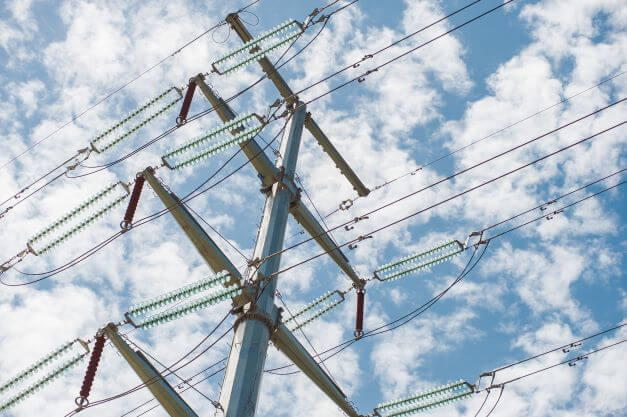When it Comes to Transmission Lines, Bigger is Often Better
Is bigger really better? Well, in the case of transmission lines, the answer is often yes.
That’s the key finding shared in a recent whitepaper, Recommended Procedure for Conductor Optimization, created by a team of Ulteig engineers who studied what factors matter the most in optimizing transmission line performance.
Selecting the conductor size is one of the most critical design decisions for a transmission line engineer in designing a transmission line that will yield the lowest cost over the design life of the transmission line. As you might imagine, as the conductor increases in size so does the cost of the line. This is due to both the higher costs for a larger conductor as well as the need for a more robust structure to adequately support the larger conductor. However, a larger conductor can significantly increase potential value streams of the transmission line over its lifecycle. Over an entire lifecycle of a transmission line, value streams, like lowering electrical losses can generate significant additional revenue and often outweigh the additional capital expense costs.
So, as you examine your next project, how can you determine the optimal conductor size? And what are the critical variables that will govern the conductor selection?
As explained in our whitepaper, we developed a procedure to determine which conductor size best minimizes the total lifecycle costs for a transmission line. Minimizing total transmission line lifecycle costs is often referred to as conductor optimization, and it involves both technical engineering and financial modeling.
In operating a modernized grid, optimization analysis plays a critical role in determining how to deliver greater value to customers. In the future, we believe that economics will play an even bigger role in determining the locations of new transmission lines. Conductor optimization plays a critical role in lowering the total lifecycle cost of a transmission line as well as ensuring that the market receives a net benefit for investing in the transmission line.
In the whitepaper, we examined conductor optimization using five different conductor types, all providing adequate levels of thermal ratings, electromagnetic field (EMF), Corona (audible noise and radio interference). These five conductor types were analyzed for their own specific capital expenses and the lost revenue from electrical losses for each of the conductors. These values, along with others, were used to create a financial model to determine the conductor that yields the lowest total lifecycle cost.
Here are several key factors to consider in deciding on the size of the conductor in a grid modernization project:
- Performing a conductor optimization can create the largest value-added engineering to a transmission line project.
- As the length of the line increases, the value of performing a conductor optimization design also increases.
- To perform a conductor optimization, numerous input variables must be defined including:
- Physical characteristics of the transmission line
- Electrical properties of the conductor
- Cost estimates of the T-Lines that support different conductors
- Financial variables from the client/utility
- The smallest conductor that meets the electrical requirements does not generally yield the lowest total lifecycle cost.
If you would like to learn more about conductor optimization, I invite you to download our free whitepaper or contact us.
Thank You: Thank you to my Ulteig colleagues Stacey Page, P.E., Engineer, Josh Potts, P.E., Technical Manager, and James Thomas, Ph.D., Engineering Supervisor, with whom I worked closely to develop the whitepaper.
By Greg Parent, P.E., S.E., Principal Engineer

Greg Parent, PE, SE is a Principal Engineer in the Transmission and Distribution department of Ulteig. Greg has over 14 years of structural design experience and has spent the last 11 years performing the structural design of both transmission lines and Substations. He has been involved with the design and construction of over 800 miles of high voltage Transmission Lines and has performed the structural design of over 20 substations. Greg has designed power infrastructure that support more than 16 Gigawatts of wind and solar projects. Greg has previously presented at TSDOS and CEATI conferences, is a member of the ASCE Transmission Line and Substation Foundation Design Committee, and is a registered Structural Engineer, SE, in Illinois, Hawaii, Nevada and Utah.

